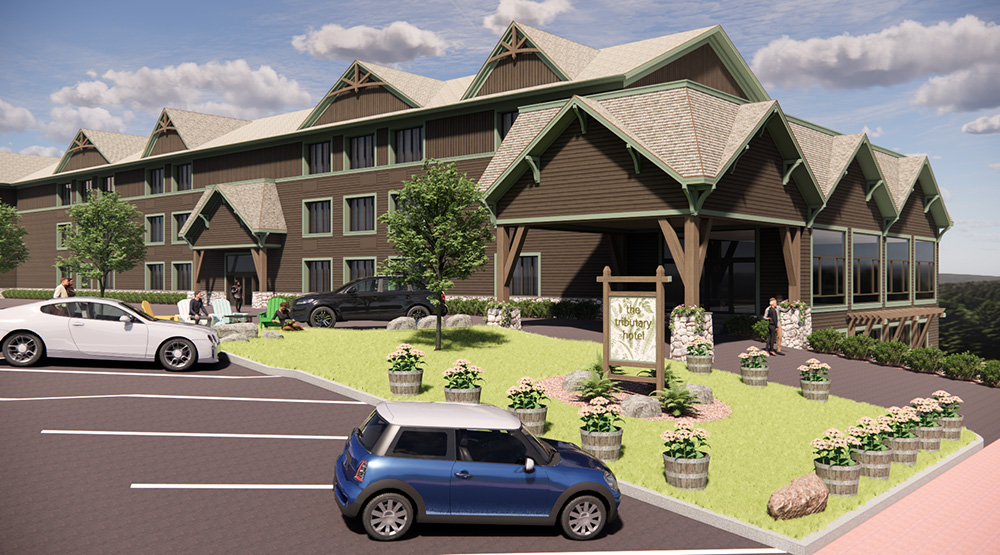
Finding the next diamond in the rough - by Harry Wheeler

Post COVID, the hotel market is once again on the rise to recovery. Rates are back up to pre-pandemic levels in many markets and occupancy is soon to be there as well, once the full impact of corporate travel returns. But, while the hotel market was asleep, the last two years has seen dramatic increases in residential and life science development and construction across the nation, which has been and is, occupying most of the construction resources available. As hotel development starts to regain its foothold in the market, we are not only competing with construction availability, but pricing increases that most hotel developments cannot absorb. This leaves us with the underlying question, where is that next diamond in the rough?
One thing we have seen throughout the last few years as air travel decreased was the strength of the “drive to” markets. Beach areas, vacation homes and mountain retreats once visited on holidays now have become destinations and, in some instances, primary residences. The work from anywhere mindset has provided freedom from the office and the ability to mix business and leisure travel to provide easier quick getaways and a short drive to road trips.

Couple these factors together and what are we seeing is the resurgence of the roadside motel. But these are not the same motels that our grandparents stayed in. With today’s hotels becoming more experiential, i.e., providing guests with customized and local experiences, hoteliers are increasingly seeking out unique and different locations for their properties in vibrant neighborhoods and communities. Not only providing the guests a new experience at their favorite destination, but also providing the first-time visitor a true taste of the location.
We are seeing and have been involved in these properties in Palm Springs, Lake Placid, Charleston, Cape Cod and the Hamptons. These destinations are sought after locations, many of which are high barrier to entry markets with little or no land acquisition opportunities available. These once overlooked motels we drove by offer great development and repositioning potential. Since these are mostly drive to properties they also have land! In many instances excess land that allows for potential development opportunities.
These quaint smaller buildings afford our clients a more competitive acquisition cost and based on the size and scale of the projects offer a more affordable renovation. These smaller properties also draw from a wider construction pool versus the larger high-rise big boxes which require a more specific labor pool. From the designer’s standpoint, we have the ability to truly have some fun and be creative with our concepts. Mostly these are one or two-story structures with rooms that tend to be on the larger size. With limited public spaces, this means all the renovation investment goes into the rooms and the overall guest experience. The renovations to the internal systems are easier, less complicated, and the projects as a whole are quicker to turn around.
The smaller room count makes the destination feel much more desirable and a bit more exclusive. The ability to be more curated in the offerings is there along with the ability to deliver a customer service that is exceptional with a low staff count. The buzz and stories that these smaller properties can create versus their larger hotel counterparts is above and beyond the competition.
In our research we have been fortunate enough to tour and stay at some of these gems such as the Room by the Beach in Bridgehampton, New York and The Anvil in Jackson, Wyoming. Both properties deliver on their promise of being unique and creating an experience that is 100% grounded in their location.
Room by the Beach is a luxury 10-room oasis in the middle of the bustling Hamptons of Long Island. A few minutes away from some of the best beaches on Long Island, this property brings the peacefulness and serenity of the beach to all guests. The reimagined motel turned retreat includes private gardens, entry decks and interiors that boast natural woods, calming paint colors and spa like bathrooms that make it the perfect destination for the most particular of travelers.
While Room by the Beach offers serenity in a tranquil manicured landscape, the Anvil boasts all things Wyoming nestled in the heart of downtown Jackson. This 50-room hotel, one block away from the main square, is the perfect blend of rustic and refined while providing a comfortable and warm atmosphere that makes all feel welcome. This property brings the essence of Jackson into every detail and finish throughout the property providing all who visit a taste of the refined rugged terrain.
We here at Group One are fortunate to be working with visionary clients who believe that the small details can make the biggest impacts. In working on these smaller scaled localized projects, we are able to breathe new life into these once forgotten structures and create something completely unique. Thoughtful design can embody the local community’s culture and history; while at the same time, meeting the needs and desires of guests, residents, and neighboring businesses. It has never been more important to create properties that are unique and tell their story. We are excited to be doing this while celebrating the motel’s new place in the world. It’s a tall order, but an exciting time for today’s hotel designers to make these diamonds in the rough shine!!
Harry Wheeler AIA, NCARB, LEED is a principal at Group One Partners, Inc., an award-winning hospitality design firm based in Boston that specializes in architectural, interior design, and purchasing services for hospitality properties.
Wheeler is a registered architect in more than 15 states and a member of numerous architectural, lodging, and marketing associations.